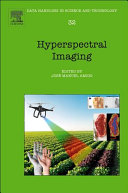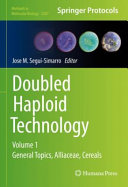Doubled Haploid Technology Volume 3 Emerging Tools Cucurbits Trees Other Species 1st Edition by Jose M Segui Simarro ISBN 1071613308 9781071613306
$50.00 Original price was: $50.00.$25.00Current price is: $25.00.
Doubled Haploid Technology Volume 3 Emerging Tools Cucurbits Trees Other Species 1st Edition by Jose M Segui Simarro – Ebook PDF Instant Download/Delivery: 1071613308 ,9781071613306
Full download Doubled Haploid Technology Volume 3 Emerging Tools Cucurbits Trees Other Species 1st Edition after payment

Product details:
ISBN 10: 1071613308
ISBN 13: 9781071613306
Author: Jose M Segui Simarro
This title offers 62 chapters divided among three volumes covering the latest topics dealing with Doubled Haploid (DH) technology, as well as methods to produce DHs in different species through different in vivo and in vitro approaches. Volume 3 looks at the emerging tools used in DH technology; protocols based on anther culture, in vitro gynogenesis and hybridization with irradiated pollen for DH production in cucubits such as cucumber, melon, watermelon, and summer squash; techniques to produce haploids and DHs in different woody species and genera such as citrus, coconut, walnut, and almond; and methods for DH production in borage, Saintpaulia ionantha, cow cockle, and marigold. Written in the highly successful Methods in Molecular Biology series format, chapters include introductions to their respective topics, application details for both the expert and non-expert reader, and tips on troubleshooting and avoiding known pitfalls.
Authoritative and comprehensive, Doubled Haploid Technology, Volume 3: Emerging Tools, Cucurbits, Trees, Other Species is a valuable resource for scientists and researchers looking to learn more about this interesting and developing field
Doubled Haploid Technology Volume 3 Emerging Tools Cucurbits Trees Other Species 1st Edition Table of contents:
Part I: Emerging Tools in DH Technology
Chapter 1: Centromere Engineering as an Emerging Tool for Haploid Plant Production: Advances and Challenges
1 Introduction
2 Genome Elimination as a Consequence of Wide Hybridization
3 CENH3 is Essential for Kinetochore Assembly
4 Defects in CENH3 Loading Lead to Chromosomal Instability
5 Generation of Inducer Lines by Alteration of CENH3 via Point Mutations
6 Application of Centromere-Mediated Haploidization in Crops and Breeding Programs
7 Advantages and Disadvantages of the CENH3-Mediated Approach for Haploid Production
References
Chapter 2: Fractional Factorial Designs: An Underutilized Tool for Rapid In Vitro System Development
1 Introduction
2 Example: An Eight-Run Fractional Factorial with Seven Factors
3 The Eight Steps of the Analysis
3.1 Other Considerations and Concluding Comments
4 Notes
References
Chapter 3: Applications of Impedance Flow Cytometry in Doubled Haploid Technology
1 Introduction
2 Materials
3 Methods
3.1 IFC Analysis of Microspores
3.1.1 General Handling and Settings of AmphaZ32
3.1.2 AmphaSoft: Data Analysis and Tools
3.2 Choice of Genotype
3.3 Donor Growing Conditions and Pesticide Applications in Relation to Microspore Viability
3.3.1 Evaluating Growing Conditions
3.3.2 Evaluating Pesticides
3.4 Estimation of Viability and Developmental Stage
3.5 Evaluation of Disinfection Methods
3.6 Choice of Microspore Extraction Method
3.7 Cell Density Determination
3.7.1 Counting Microspores or Pollen per Anther or Flower
3.7.2 Measuring Cell Concentrations After Isolation
3.7.3 Measuring Cell Concentrations in Developing Cultures
3.8 Optimizing Androgenic Switch Treatments
3.9 Monitoring Microspore Development in Culture
4 Notes
References
Part II: Doubled Haploids in Cucurbits
Chapter 4: Production of Doubled Haploid Plants in Cucumber (Cucumis sativus L.) Through Anther Culture
1 Introduction
2 Materials
2.1 Plant Material
2.2 Equipment
2.3 Laboratory Materials
2.4 Greenhouse/Growth Chamber Materials
2.5 Solutions and Culture Media
3 Methods
3.1 Donor Plant Growth Conditions
3.1.1 Greenhouse Culture
3.1.2 Open Field Cultivation
3.2 Characterization of the Microspore Stage
3.3 Flower Bud Collection and Pretreatment and Sterilization
3.4 Anther Culture Process
3.4.1 Callus Induction
3.4.2 Analysis of Ploidy by Flow Cytometry
3.5 Induction of Callus Organogenesis and Plant Regeneration
3.6 Plant Regeneration and Acclimatization
4 Notes
References
Chapter 5: Doubled Haploid Parthenogenetic Production of Melon `Piel de Sapo ́
1 Introduction
2 Materials
2.1 Plant Material
2.2 General Labware
2.3 Equipment
2.4 Solutions, Culture Media and Melon Substrate
3 Methods
3.1 Growth Conditions for Melon Plants
3.2 Male Flower Collection, Irradiation and Pollination
3.3 Parthenogenetic Embryo Rescue and Plant Regeneration
3.4 Ploidy-Level Determination
3.5 Micropropagation and Acclimatazion
3.6 Chromosome Doubling of Haploid Plantlets and Seed Recovery
4 Notes
References
Chapter 6: Doubled Haploid Production in Watermelon
1 Introduction
2 Materials
2.1 Equipment
2.2 General Materials
2.3 Solutions
2.4 Culture Media
3 Methods
3.1 Growth of Donor Plants
3.2 Irradiated Pollen Technique
3.3 Unfertilized Ovule/Ovary Culture
3.4 Anther Culture
3.5 Chromosome Doubling
4 Notes
References
Chapter 7: Anther Culture in Cucurbita Species
1 Introduction
2 Materials
2.1 Plant Material
2.2 Equipment
2.3 Laboratory Materials
2.4 Greenhouse/Growth Chamber Materials
2.5 Solutions and Culture Media
3 Methods
3.1 Donor Plant Growth Conditions
3.2 In Vitro Culture of Anthers
3.3 Ploidy Determination
3.3.1 Chromosome Counting
3.3.2 Stomatal Observations
3.4 Acclimatization Process
3.5 Chromosome Doubling
3.5.1 In Vitro Chromosome Doubling
3.5.2 In Vivo Chromosome Doubling
4 Notes
References
Chapter 8: Gynogenesis in Cucurbita Species
1 Introduction
2 Materials
2.1 Plant Material
2.2 Equipment
2.3 Laboratory Materials
2.4 Greenhouse/Growth Chamber Materials
2.5 Solutions and Culture Media
3 Methods
3.1 Donor Plant Growth Conditions
3.2 In Vitro Culture
3.3 Ploidy Determination
3.3.1 Chromosome Counting
3.3.2 Stomatal Observations
3.4 Acclimatization Process
3.5 Chromosome Doubling
3.5.1 In Vitro Chromosome Doubling
3.5.2 In Vivo Chromosome Doubling
4 Notes
References
Chapter 9: Induction of Parthenogenesis by Irradiated Pollen in Cucurbita Species
1 Introduction
2 Materials
2.1 Plant Material
2.2 Equipment
2.3 Laboratory Materials
2.4 Greenhouse/Growth Chamber Materials
2.5 Solutions and Culture Media
3 Methods
3.1 Donor Plant Growth Conditions
3.2 In Vivo Experiments
3.3 In Vitro Cultures
3.4 Ploidy Determination
3.4.1 Chromosome Counting
3.4.2 Stomatal Observations
3.5 Acclimatization Process
3.6 Chromosome Doubling
3.6.1 In Vitro Chromosome Doubling
3.6.2 In Vivo Chromosome Doubling
4 Notes
References
Part III: Doubled Haploids in Woody Species
Chapter 10: Microspore Embryogenesis in Citrus
1 Introduction
2 Materials
2.1 Plant Material
2.2 Equipment
2.3 Glassware
2.4 General Labware
2.5 Greenhouse Materials
2.6 Solutions
2.7 Culture Media
2.8 PCR
2.9 Polyacrylamide (PA) Gel Electrophoresis
3 Methods
3.1 Flower Bud Collection and Analysis of Pollen Development
3.2 Flower Bud Disinfection, Anther and Microspore Isolation
3.3 In Vitro Culture and Embryo Germination
3.4 Ploidy Analysis of Regenerants
3.5 Molecular Characterization of Regenerants by Microsatellite Analysis
3.5.1 DNA Extraction and Amplification
3.5.2 Polyacrylamide Gel Electrophoresis (PAGE) and Silver Staining
3.6 Plant Development and Acclimatization
4 Notes
References
Chapter 11: Anther Culture in Coconut (Cocos nucifera L.)
1 Introduction
2 Materials
2.1 Plant Material
2.2 Equipment
2.3 Other Materials
2.4 Solutions and Media
3 Methods
3.1 Anther Culture
3.2 Acclimatization
3.3 Flow Cytometry Analysis
4 Notes
References
Chapter 12: Production of Haploid and Doubled Haploid Lines in Nut Crops: Persian Walnut, Almond, and Hazelnut
1 Introduction
2 Materials
2.1 Plant Material
2.2 Equipment
2.3 Glassware
2.4 General Labware
2.5 Solutions
2.6 Culture Media
2.7 PCR
2.8 Polyacrylamide (PA) Gel Electrophoresis
3 Methods
3.1 Induction of Parthenogenesis with Irradiated Pollen in Walnut
3.1.1 Pollen Collection, Irradiation, and Pollination
3.1.2 Fruit Collection and In Vitro Germination
3.1.3 Ploidy Analysis of Regenerants by Chromosome Counting
3.2 Microspore Embryogenesis in Almond and Hazelnut
3.2.1 Flower Bud Collection and Analysis of Pollen Development
3.2.2 Flower Bud and Catkin Disinfection
3.2.3 Anther and Embryo Culture in Almond
3.2.4 Microspore Culture in Hazelnut
3.2.5 Ploidy Analysis of Regenerants by Flow Cytometry
3.3 Molecular Characterization of Regenerants by Microsatellite Analysis in Walnut, Almond, and Hazelnut
4 Notes
References
Chapter 13: Production of Doubled Haploid Embryos from Cork Oak Anther Cultures by Antimitotic Agents and Temperature Stress
1 Introduction
2 Materials
2.1 Equipment
2.2 General Materials
2.3 General Solutions
2.4 Plant Tissue Culture Media
2.5 Antimitotic Treatment Solutions
2.6 Solutions for Embryo DNA Extraction
2.7 Chemicals for Simple Sequence Repeat Amplification
3 Methods
3.1 Collection of Plant Material and Cold Pretreatment
3.2 Anther Culture and Induction of Microspore Embryogenesis
3.3 Determination of the Ploidy Level of Anther Embryos by Flow Cytometry
3.4 Microsatellite DNA Marker Analysis
3.5 Antimitotic Treatments to Induce Chromosome Doubling
3.6 Maturation and Germination of DH Embryos
3.7 Acclimation of DH Plantlets
4 Notes
References
Chapter 14: Anther Culture in Jatropha curcas L.: A Tree Species
1 Introduction
2 Materials
2.1 Plant Material
2.2 Equipment
2.3 Labware
2.4 Solutions
2.5 Culture Media
3 Methods
3.1 Anther Culture
3.2 Ploidy Analysis Using Flow Cytometry
3.3 DNA Isolation and SSR Marker Analysis
3.4 SSR Analysis and Identification of Haploids
4 Notes
References
Part IV: Doubled Haploids in Other Species
Chapter 15: Haploid Plant Production in Borage (Borago officinalis L.) by Anther Culture
1 Introduction
2 Materials
2.1 Plant Material
2.2 Equipment
2.3 General Labware and Glassware
2.4 Solutions and Culture Media for Anther Culture
3 Methods
3.1 Donor Plant Growth Conditions
3.2 Flower Bud Collection
3.3 Determination of the Developmental Stage of Microspores
3.4 Anther Extraction and Disinfection
3.5 Pretreatments
3.6 In Vitro Culture of Anthers
3.7 Analysis of the Ploidy Level
3.7.1 Determination of Chromosome Number
3.7.2 Flow Cytometry
3.7.3 Measurement of Stomatal Guard Cells
4 Notes
References
Chapter 16: Anther-Based Regeneration of African Violet (Saintpaulia ionantha)
1 Introduction
2 Materials
2.1 Equipment
2.2 General Material
2.3 Solutions and Culture Media
3 Methods
3.1 Donor Plant Cultivation
3.2 Anther Culturing In Vitro
3.3 Rooting In Vitro
3.4 Acclimatization
3.5 Chromosome Observation
3.6 Chromosome Doubling Treatment
4 Notes
References
Chapter 17: Doubled Haploidy for Cow Cockle (Saponaria vaccaria L.)
1 Introduction
2 Materials
2.1 Equipment
2.2 Solutions and Culture Media
3 Methods
3.1 Donor Plant Conditions
3.2 Protocol for Microspore Culture
3.3 Embryo Culture
3.4 Plantlet Culture and Plant Growth
3.5 Chromosome Doubling
4 Notes
References
Chapter 18: Production of Haploids and Doubled Haploids in Marigold (Tagetes spp.) Using Anther Culture
1 Introduction
2 Materials
2.1 Glassware/Plasticware
2.2 Basic Instrumentation Facility Required
2.3 Solutions
2.4 Culture Media, Reagents, and Buffers
3 Methods
3.1 Raising of Donor Plants and Growth Conditions
3.2 Collection and Preparation of Flower Buds
3.3 Disinfection of Buds, Anther Excision, and In Vitro Culture
3.4 Characterization of Anther-Derived Regenerants for Ploidy Analysis
3.4.1 Indirect Method by Using Chloroplast Count in Stomatal Guard Cells
3.4.2 Direct Screening Method by Using the Root Tip Squash Technique
3.4.3 Direct Screening Method by Using Flow Cytometry
3.5 Diploidization of the Haploid Plants
4 Notes
References
Chapter 19: Anther Culture of Chickpea (Cicer arietinum L.)
1 Introduction
2 Materials
2.1 Plant Material
2.2 Equipment
2.3 General Labware and Glassware
2.4 Solutions and Culture Media for Anther Culture
3 Methods
3.1 Donor Plant Growth Conditions
3.2 Flower Bud Collection and Processing
3.3 Anther Culture
3.4 Analysis of the Ploidy Level
3.5 Determination of Chromosome Number
3.6 Flow Cytometry
4 Notes
References
Chapter 20: Production of Homozygous Red Beet (Beta vulgaris L. subsp. vulgaris) Plants by Ovule Culture
1 Introduction
2 Materials
2.1 Equipment and General Materials
2.2 Glassware
2.3 Substrates and Fertilizer
2.4 Culture Media
2.5 Solutions
3 Methods
3.1 Growth of Donor Plants
3.2 Bud Selection and Disinfection
3.3 Regeneration and Acclimatization of the Gynogenetic Plants
3.4 Ploidy Evaluation of Gynogenetic Plants by Flow Cytometry and Isozyme Analysis
4 Notes
References
Chapter 21: Production of Doubled Haploid Sugar Beet (Beta vulgaris L.) Plants Through Gynogenesis
1 Introduction
2 Materials
2.1 Plant Material, Explant Isolation, and Sterilization
2.2 Culture Medium and Incubation
2.3 Diploidization
2.4 Flow Cytometry Analysis
2.5 Chromosome Counting
2.6 Acclimation
3 Methods
3.1 Plant Material, Explant Isolation, and Sterilization
3.2 Culture Medium, In Vitro Explantation, and Incubation
3.3 Diploidization
3.4 Flow Cytometry Analysis
3.5 Chromosome Counting
3.6 Acclimation
4 Notes
People also search for Doubled Haploid Technology Volume 3 Emerging Tools Cucurbits Trees Other Species 1st Edition:
double haploid method
double haploid vs diploid
double haploid breeding
double haploid corn
a haploid is
Tags: Jose M Segui Simarro, Doubled Haploid Technology, Tools Cucurbits, Trees
You may also like…
Business & Economics - Management & Leadership
Tech At The Edge Evaluating Potential of Emerging Tools 3rd Edition Abbie Lundberg
Uncategorized
Hyperspectral Imaging Volume 32 1st Edition by Jose Manuel Amigo ISBN 9780444639776 0444639772
Biology and other natural sciences - Molecular
Business & Economics - Small Business
Biology and other natural sciences - Molecular
Doubled Haploid Technology Volume 2 Hot Topics Apiaceae Brassicaceae Solanaceae Jose M Segui Simarro
Fiction - Women's Fiction
Engineering - Civil & Structural Engineering











